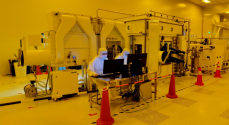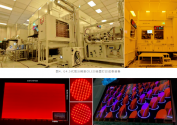Jihua Laboratory has made a major breakthrough in the research of high-resolution OLED inkjet printing equipment
Compared with traditional OLED panel evaporation technology, OLED inkjet printing technology has on-demand printing and high material utilization (evaporation process material utilization rate is <15%, inkjet printing can increase to more than 85%), and does not require high With the advantages of precision mask and no need for vacuum environment, it is the most potential luminescent layer forming method for making large-size OLED panels. It is becoming a major technological revolution in the new display industry and is also hailed as completely changing the current OLED electronic display industry. A disruptive industrial technological revolution that transforms "evaporation process" into "inkjet printing" technology.

Professor Zhu Yunlong’s team in Jihua Laboratory has been committed to developing high-resolution OLED inkjet printing equipment. The team spent more than 3 years and successively achieved breakthroughs in macro-volume inkjet printing synchronous collaborative control technology, large-scale cavity multi-physics and high stability It has formed a unique inkjet printing technology solution using a number of key core technologies such as sex controllable technology, high-precision alignment system, and high-precision circulating ink supply system. It has successfully developed a complete set of 200mm×200mm OLED inkjet printing equipment and achieved 7 The full-color printing and lighting of 137-inch 137ppi substrates, the printing and UV testing of 5-inch 254ppi and 300ppi substrates mark the first time that my country's independent equipment has achieved high-resolution printing of 300ppi, and its performance has reached the international advanced level.

